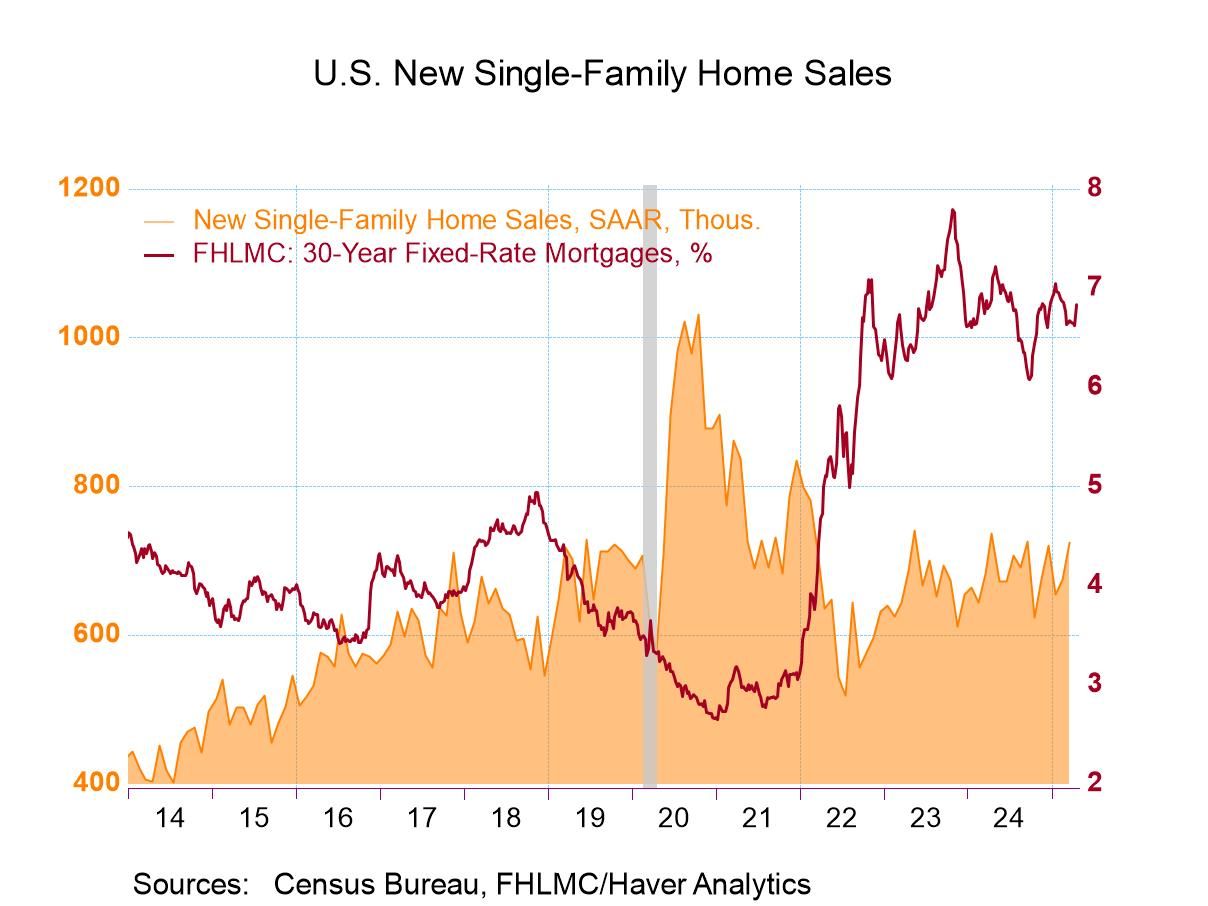EU Indexes Show Slight Erosion

The EU commission's overall reading for the European Monetary Area unexpectedly eroded, dropping to 95.2 in March from 96.3 in February, leaving it also below its January 2025 level but above its December 2024 level. It may simply be too soon for this survey to reflect any of the changes going on in Europe. But very clearly a ramp up in military spending is planned and economic conditions in the monetary union and beyond are about to receive a significant boost. While that development might be simply too new to have gotten into the indexes as of March, it is still in train so curb your disappointment.
EMU in March by Sector March readings for the monetary union show the industrial sector unchanged at -11 from February but showing improvement compared to both the December and January readings. Consumer confidence slipped in March to -14.5 from -13.6 in February and it's below its January and December levels as well. Retailing slipped to -7 in March from -5 in February and it also is below its string of readings since December of last year. Construction spending at -3 posted the same reading it logged in February and in January and those were slight improvements from December. The services reading in March slipped to +2 from +5 in February and it is also below its reading of +6 in January.
Country Readings Country level data show readings for 18 of the monetary union members; of these 18, only 6 have percentile standings for overall indexes that are above their median (a ranking of 50%) calculated on data back to 1990. Only one of the four largest countries has a reading above its median and that's Spain at a standing at 51.4% Other large countries show much weaker readings with Germany at a 16-percentile standing, Italy at a 37-percentile standing, and France at a 37.5 percentile standing. Month-to-month changes show deterioration in nine of the 18 reporting countries. This compares to a deterioration in eight in February and compares to January when six weakened relative to December. It is a worsening trend but based on developments in military spending to shore up NATO. Europe supported defense systems must carry more of the load. This will imply stimulus across the board coming for the monetary union.

The Four Largest EMU Economies – Sector Standing Standings by sector are fleshed out in the table above for the four largest economies with their standings compared to the overall results for the monetary union. Construction has consistently been the highest standing at a 71.1 percentile reading; this is for these four countries in terms of their unweighted average. Consumer confidence at a 53.8 percentile standing, ranks next, followed by retailing at 51.2%. Those readings are followed by a 31.7 percentile standing for industry and a 29.9 percentile standing for services. The average reading for the four largest economies is 35.5 percentile; and if we reweight those to reflect GDP size, the average weighting drops to is 31.3%. This compares to an overall reading for the European Monetary Union 30.4%. The large economies post higher percentile rankings than the European Monetary Union as a whole for consumer confidence and for the industrial gauge; otherwise they have slightly weaker readings than the overall readings for the monetary union by sector.
Summing up The weakness in March was unexpected, probably because there's anticipation that this change in military spending is going to ripple through the European economy and spread strength across sectors. That is certainly due to happen. It might just be a little too soon for it to show up in these figures. For the time being, that is my working hypothesis. I am not going to get too excited about the unexpected weakness in this report from March because military spending is coming.

Robert Brusca
AuthorMore in Author Profile »Robert A. Brusca is Chief Economist of Fact and Opinion Economics, a consulting firm he founded in Manhattan. He has been an economist on Wall Street for over 25 years. He has visited central banking and large institutional clients in over 30 countries in his career as an economist. Mr. Brusca was a Divisional Research Chief at the Federal Reserve Bank of NY (Chief of the International Financial markets Division), a Fed Watcher at Irving Trust and Chief Economist at Nikko Securities International. He is widely quoted and appears in various media. Mr. Brusca holds an MA and Ph.D. in economics from Michigan State University and a BA in Economics from the University of Michigan. His research pursues his strong interests in non aligned policy economics as well as international economics. FAO Economics’ research targets investors to assist them in making better investment decisions in stocks, bonds and in a variety of international assets. The company does not manage money and has no conflicts in giving economic advice.






